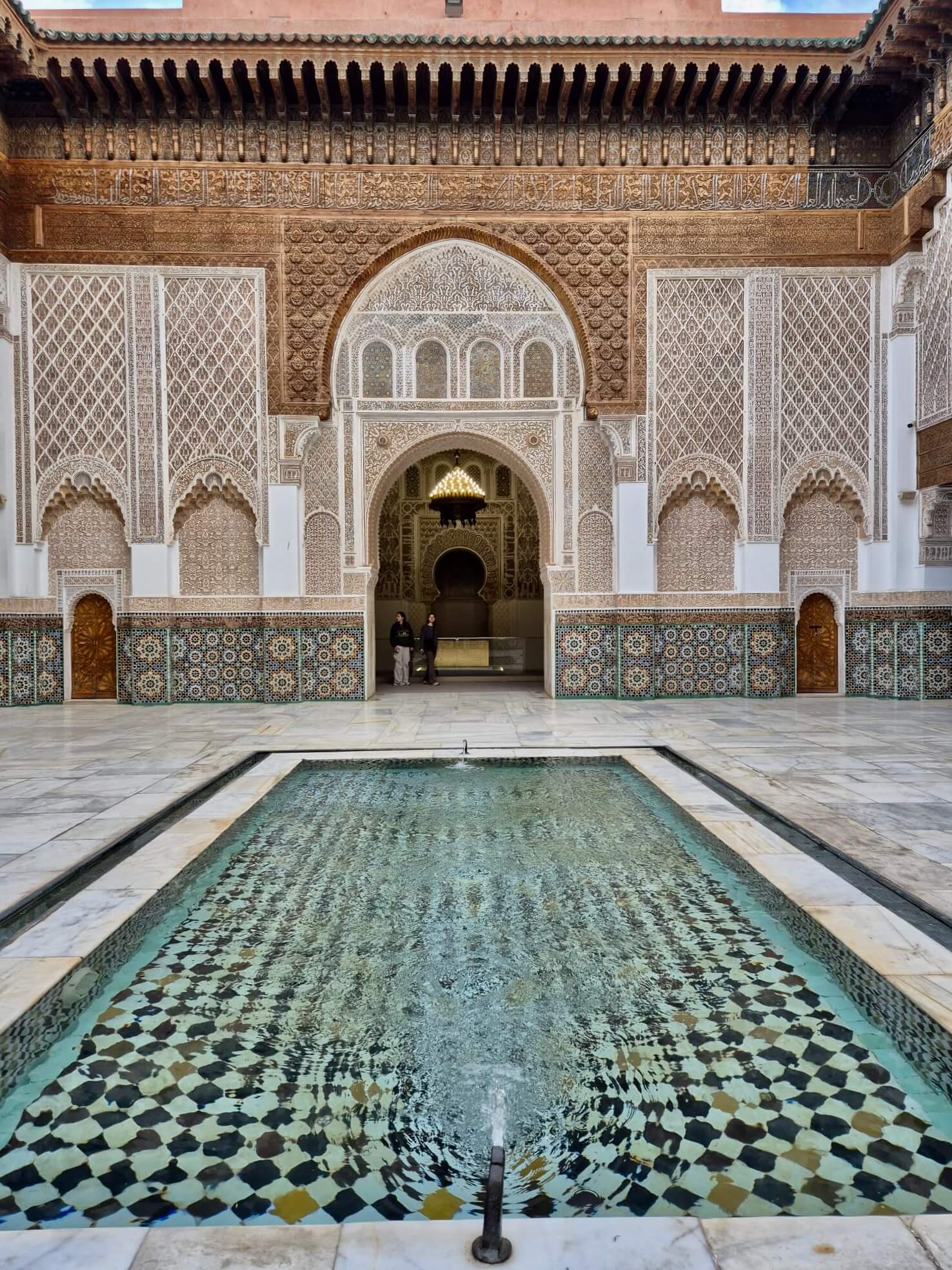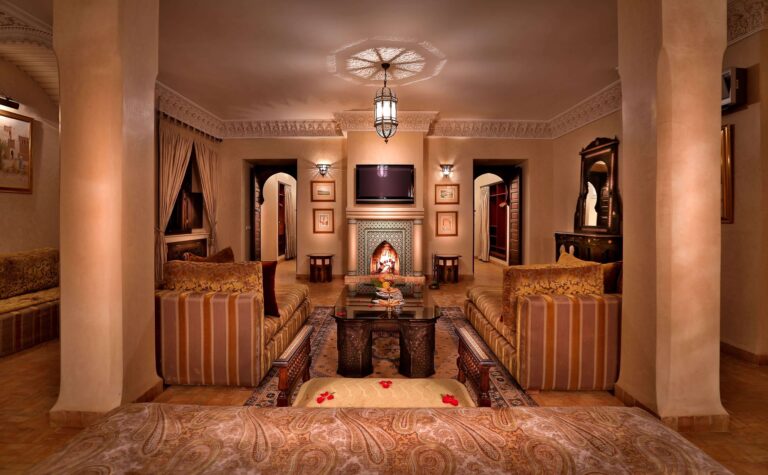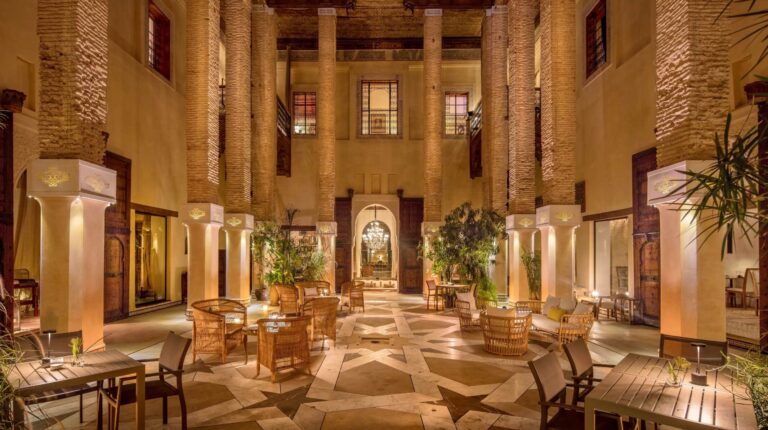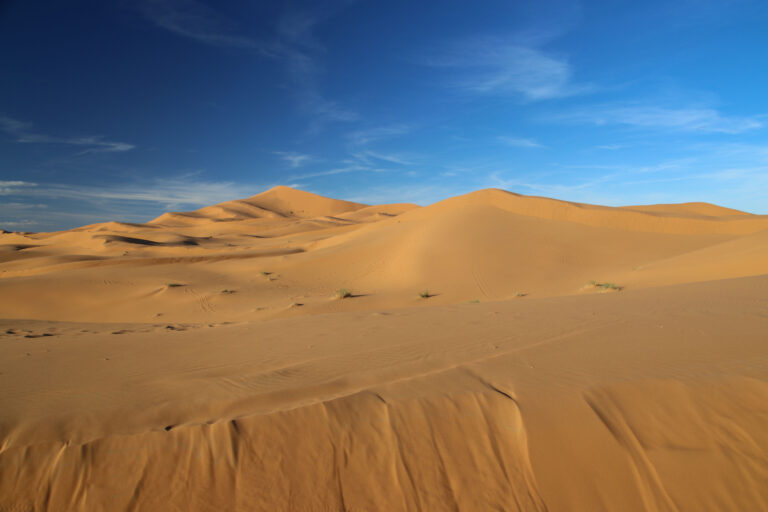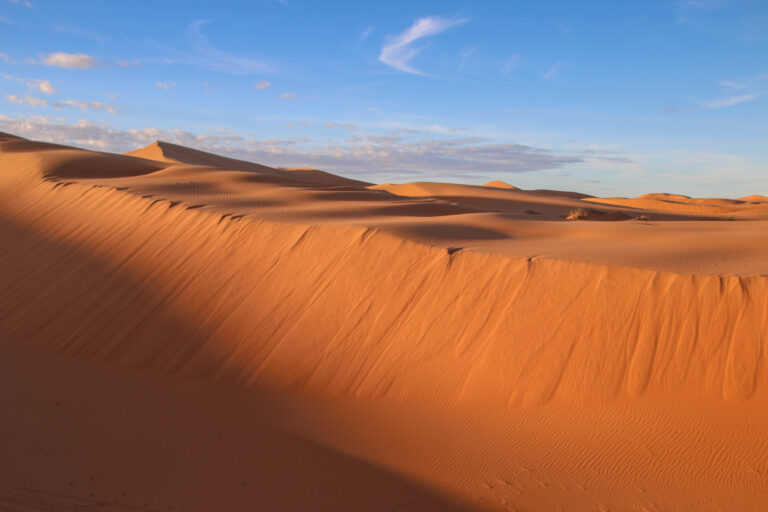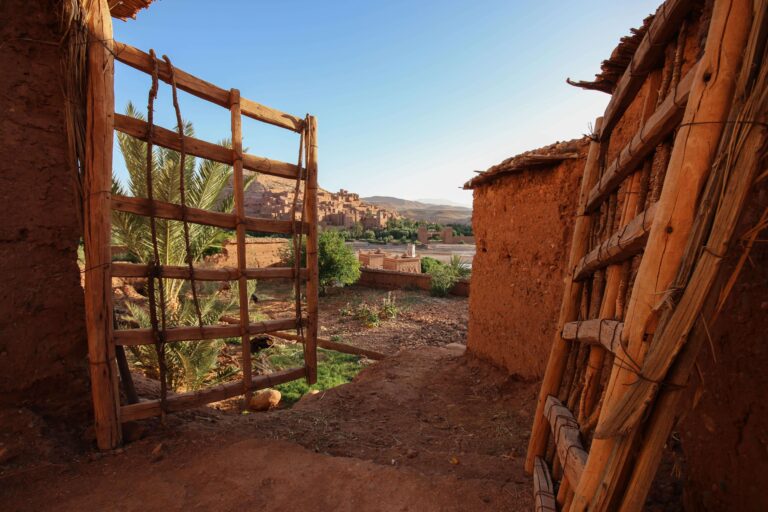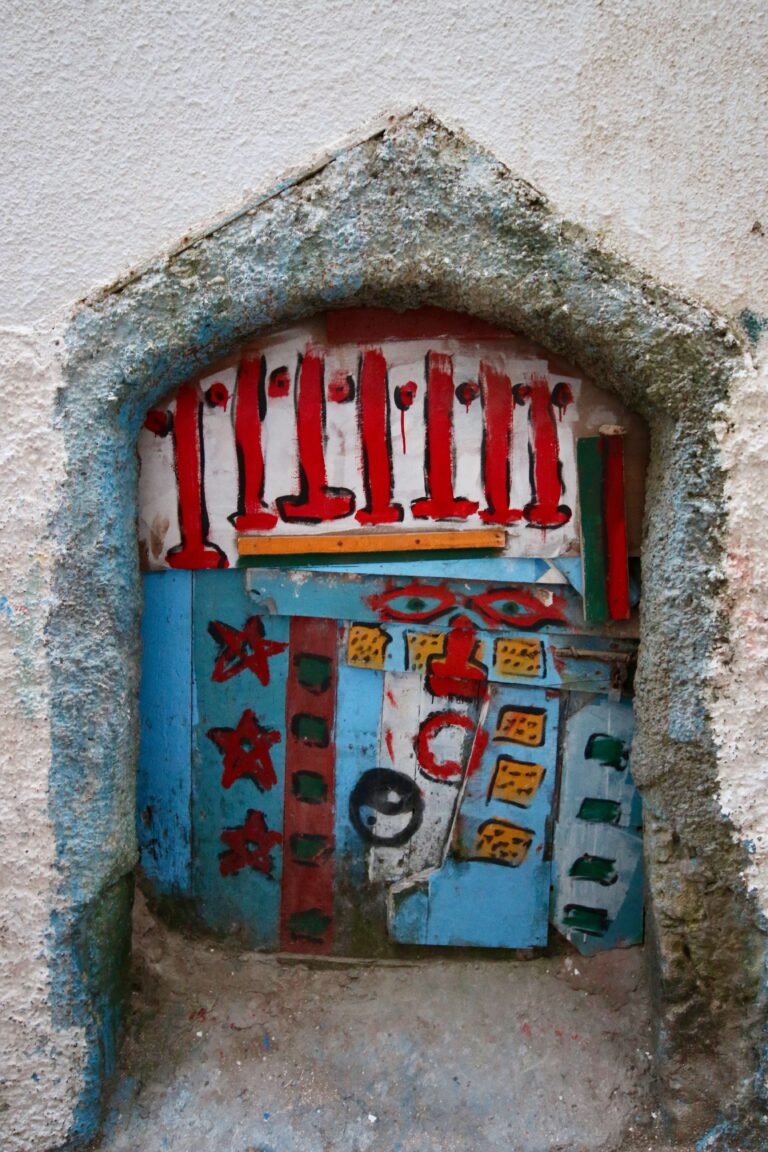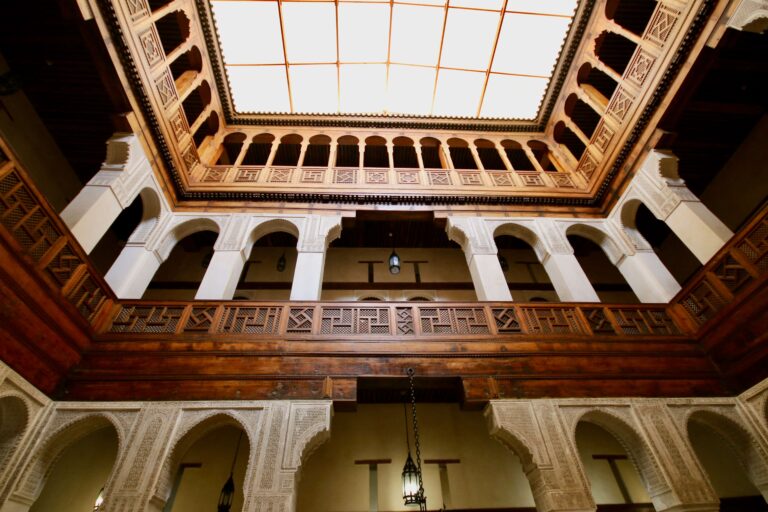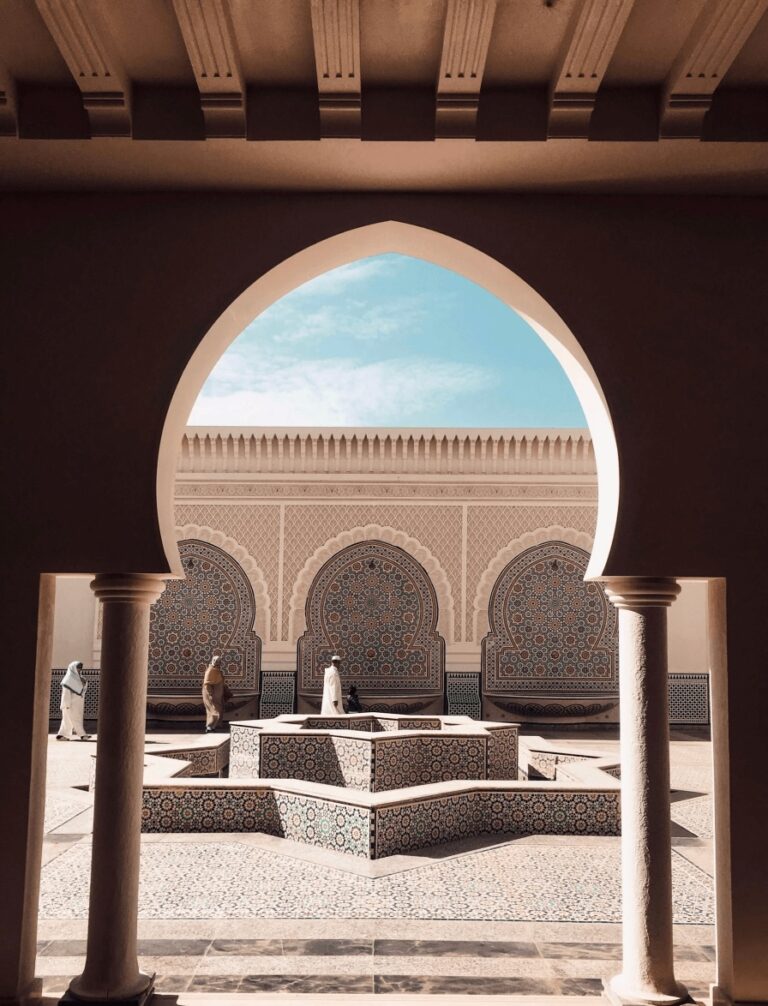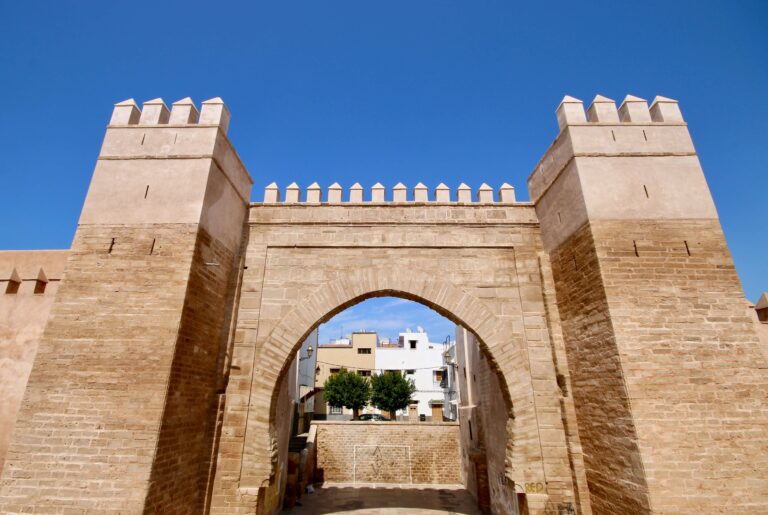Morocco’s Imperial Cities: Fes + Marrakech + Meknes + Rabat
Sometimes I find it hard to wrap my head around Moroccan history. There have been so many different rulers and dynasties throughout the centuries! I understand the Amazigh are the original inhabitants and the French established a colony here in the early 20th century.
But who was responsible for building the ancient medinas and architectural marvels that are synonymous with Morocco today?
It’s when I’m visiting Morocco’s Imperial Cities that the answer to these questions becomes a little clearer.
Morocco’s Imperial Cities represent the country’s most historically significant urban centres. Each offers a unique glimpse into the nation’s storied past.
Fes, Marrakech, Meknes and Rabat have all served as the capital city of Morocco at various points, acting as the political, economic and spiritual hearts of the kingdom.
Having explored all four Imperial Cities, I can safely say they are “must-visit” destinations for history buffs heading to Morocco. Not only are they home to some of the country’s most impressive landmarks but there are telltale signs around every corner of past dynasties and rulers.
On a tour of the Imperial Cities, you’ll not only immerse yourself in the cultural heritage of Morocco. You’ll also encounter architectural beauties, lively souks and incredible people along the way.
While wandering the labyrinthine medinas, you’ll discover how each city has shaped the country’s fortunes and witness their evolution into 21st-century urban hubs.
In this article, discover the fascinating history of Morocco’s Imperial Cities, from the ochre-hued streets of Marrakech to the modern capital of Rabat. I’ll also share tips for visiting all four destinations during your trip to Morocco, which is made easy by the country’s efficient rail network.
If you want to explore Morocco’s Imperial Cities independently, check out my suggested one-week itinerary from Fes to Marrakech.
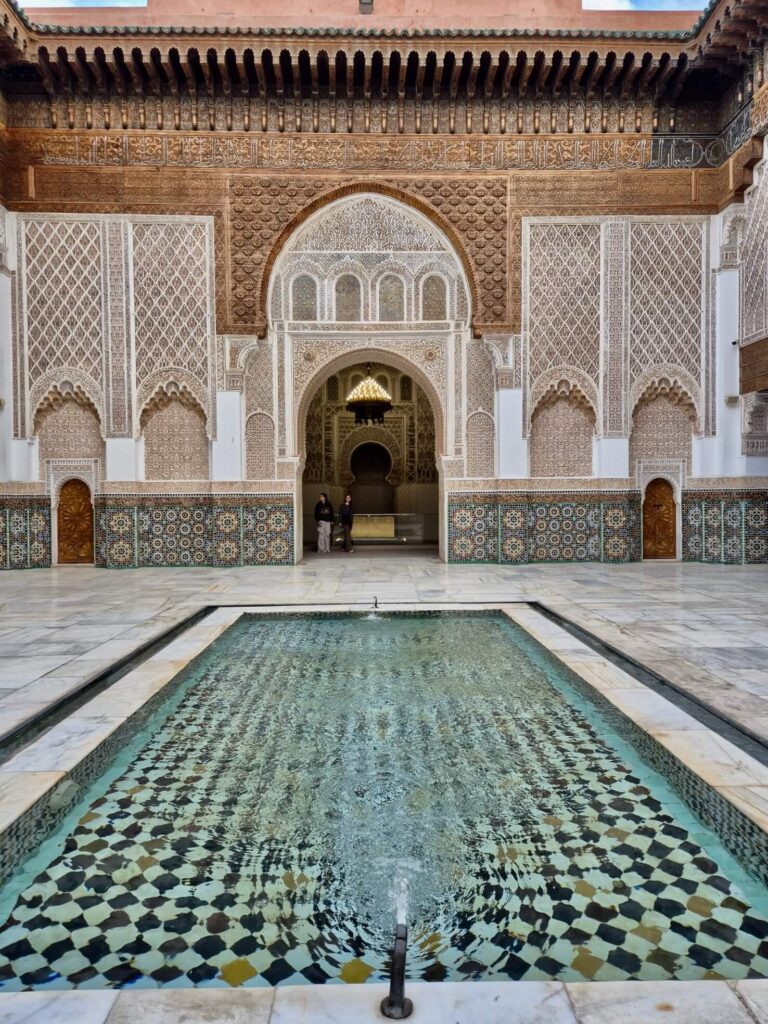
Disclosure: This article contains affiliate links, meaning I earn a small commission when you make a purchase. Affiliate links cost you nothing and ensure my content stays free!
BEST IMPERIAL CITIES TOURS IN MOROCCO
Don’t have time to read the whole article? These are my top Morocco Imperial Cities tour recommendations:
What are the Imperial Cities of Morocco?
Morocco’s imperial cities – Fes, Marrakech, Meknes and Rabat – were constructed to serve as the grand seats of power for Morocco’s ruling dynasties. They were built to impress and inspire awe in all who set eyes upon them.
All feature sprawling palace complexes that housed the king or sultan and his entourage of courtiers, viziers and advisors.
The ambition and scale of these imperial capitals is impressive. Each was designed to project the wealth, might and grandeur of the monarchy to the world.
Founded in the 8th century, Fes is the oldest of the imperial cities. It is known for its UNESCO-listed medina, home to the world’s oldest continuously operating university, Al Quaraouiyine.
Marrakech, founded in 1062, is famous for its bustling souks and stunning Islamic architecture like Koutoubia Mosque and Bahia Palace.
Meknes became an imperial city in the 17th century under the rule of Sultan Moulay Ismail. It is renowned for its impressive gates and the grand Mausoleum of Moulay Ismail.
Rabat, the current capital of Morocco, is a more modern city. But it still has an ancient medina and is home to the atmospheric Kasbah of the Oudaias.
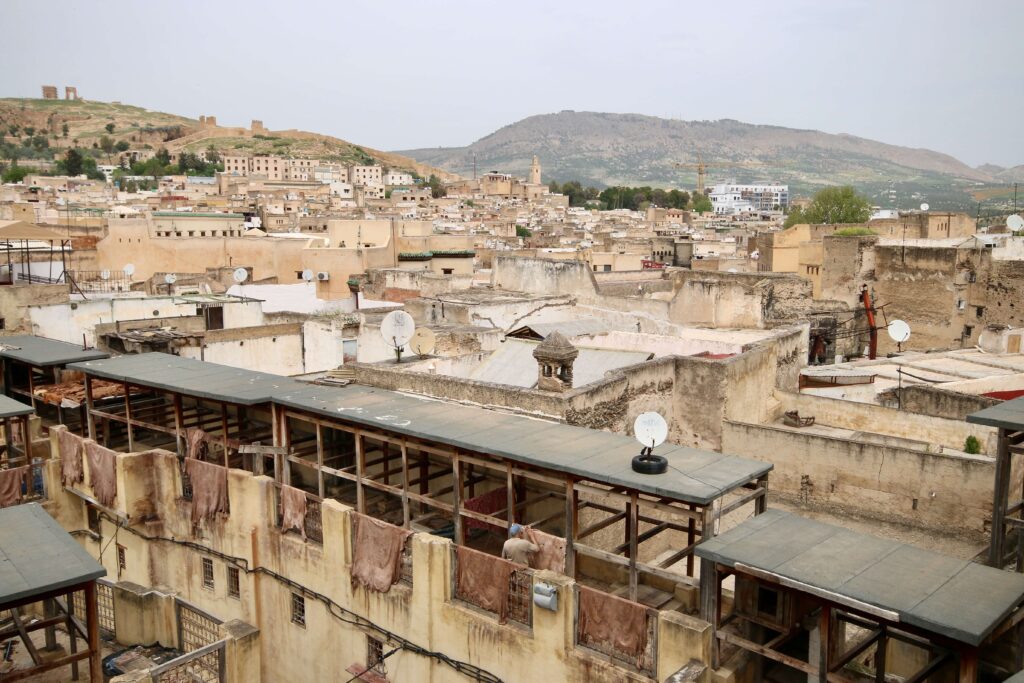
Fes
Fes has played an important role in Morocco’s illustrious history. It served as the capital city during numerous dynastic reigns over the centuries.
Founded between 789 and 808 AD by the Idrisid ruler Idris I, Fes went on to become the seat of power for the Idrisids, Marinids, Wattasids, Saadians, Dila’ites and Alaouites.
This ancient imperial city boasts the oldest and largest medina in Morocco. In fact, Fes has been a hub of culture, commerce and learning for over a millennium.
Its more than 1,000 alleyways are now designated as a UNESCO World Heritage Site. Over the years, they have borne witness to the diverse influences that have shaped its architectural and cultural identity.
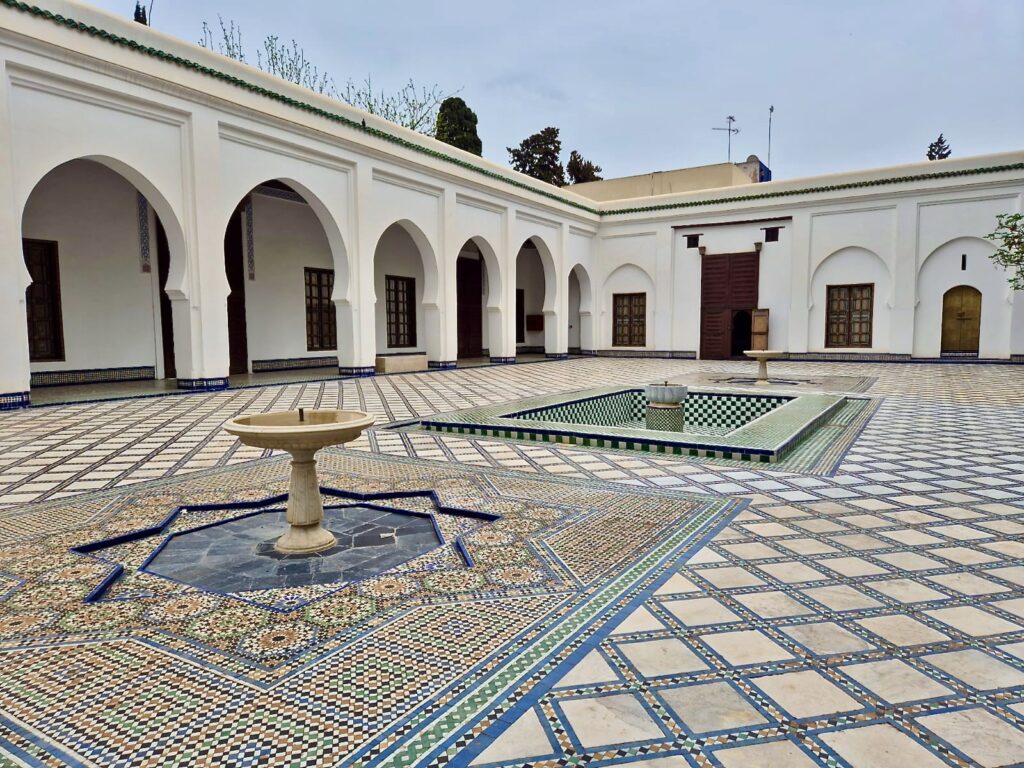
While visiting Fes, you can explore lavish palaces, intricately decorated madrasas and one of the world’s oldest universities. All while soaking up the sights, sounds and smells of the medina, Fes el Bali.
Get up close to centuries-old artefacts at the Nejjarine Museum of Wooden Crafts and photograph the legendary Choura Tannery. Alternatively, you can learn about the city’s Jewish cultural heritage in the Mellah quarter.
At the end of the day, you can relax amidst the tranquility of a beautifully restored riad, with Fes boasting some of Morocco’s best. Whether you’re travelling on a budget or looking to indulge in a little luxury, these oasis-like accommodations are a uniquely Moroccan experience.
Top tip:
Be sure to visit the newly restored Dar Batha Museum, which features a timeline of Morocco’s successive rulers and dynasties. This historic timeline is located just to the left after the entrance.
For more information about visiting this ancient city, check out my Essential Travel Guide to Fes.

Marrakech
Now one of Morocco’s most popular tourist destinations, Marrakech has played a pivotal role in the kingdom’s history for centuries.
Emerging as the capital under Almoravid sultan Youssef Ibn Tachfin in 1062, it went on to serve as the seat of power for several successive dynasties. Each of these dynasties has left an indelible mark on its architectural and cultural landscape.
Nicknamed the “Red City,” Marrakech flourished as the capital of the Almoravid dynasty from 1071 to 1147. This was followed by the Almohad dynasty from 1147 to 1244. It later became the seat of the Saadi dynasty and even the Alaouite dynasty, the current ruling royal family of Morocco.
Today, there are plenty of opportunities to discover the city’s glorious past at sites like El Badi Palace and the Saadian Tombs. Plus, there are several engaging museums to explore.
Top tip
Aside from being a fascinating destination in its own right, Marrakech can be used as a base for exploring the Atlas Mountains and Agafay Desert.
The beating heart of Marrakech’s historic medina is Djemaa el-Fnaa, a bustling square filled with snake charmers, storytellers and food stalls. Radiating from this central meeting point are the city’s legendary souks, overflowing with textiles, spices and handicrafts.
Aside from its historical significance, Marrakech boasts a wealth of inspiring accommodation, from humble riads to luxury resorts and all-inclusive stays. Many of these occupy beautifully preserved buildings that will immerse you in the city’s glorious past.
Marrakech also serves as the main departure point for overnight journeys into the Sahara Desert and as a gateway for exploring the gorges and oases of the Atlas Mountains.
Its airport, Marrakech Menara, is well-served by international flights, making it a logical arrival and/or departure point on an Imperial Cities tour of Morocco.
For more information about visiting the “Red City”, check out my Essential Travel Guide to Marrakech.
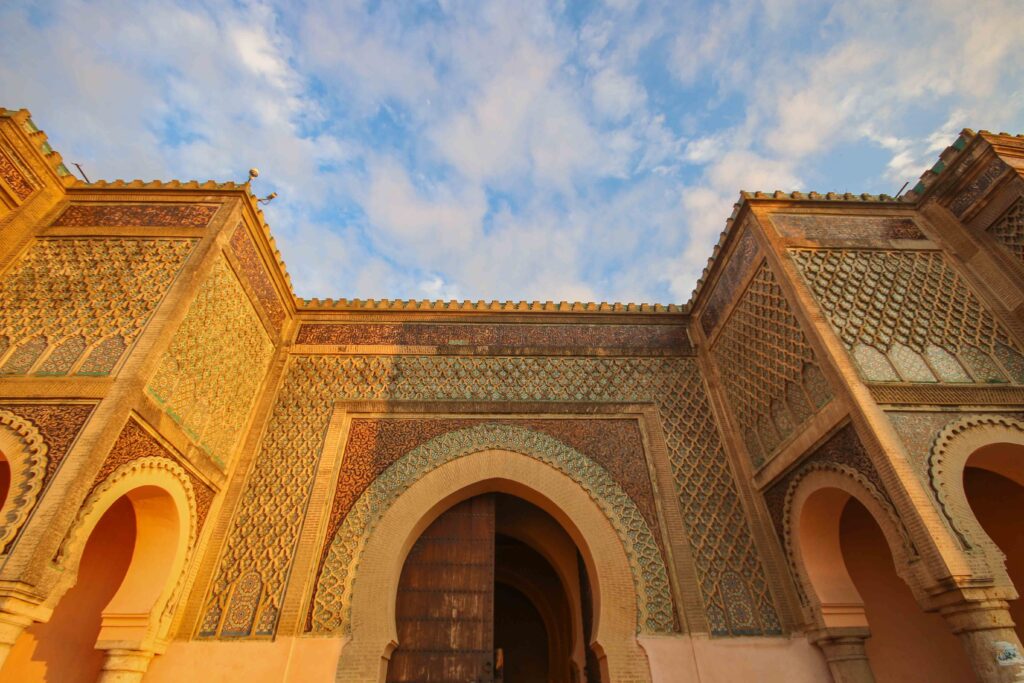
Meknes
Founded in the Middle Ages as a modest settlement, Meknes saw its fortunes radically changed in the 17th century. This is when Sultan Ismail decided to make it the capital of his kingdom.
During his reign from 1672 to 1727, the city underwent a dramatic transformation. Sulatin Ismail ambitiously tried to remodel the city in the image of a “Moroccan Versailles”.
Inspired by his admiration for King Louis XIV, the sultan set about rebuilding and greatly expanding the old kasbah into a monumental palace-city. This is located to the south of Meknes’ historic urban core.
Grandiose royal residences, soaring gates and landscaped gardens were established. All reflected Ismail’s vision of creating a capital that would rival the splendour of his French counterpart.
Tragically, Meknes’ period of glory was short-lived. Successive invasions and a devastating earthquake in 1755 took a heavy toll, leaving much of the sultan’s efforts in ruins.
Today, only fragments of Ismail’s grand architectural legacy remain. These include the immense royal stables that were said to have housed up to 12,000 horses at their peak.
A glimpse of the city’s former opulence can be seen at the Mausoleum of Moulay Ismail, the final resting place of the sultan and his family.
Top tip:
Meknes can easily be visited as a day trip from Fes or you can stay overnight in one of the city’s beautifully restored riads.
Nicknamed the “City of a Hundred Minarets”, Meknes remains a fascinating city to explore. This is not least because of Bab Mansour – considered one of the most impressive gates in Africa.
An exquisite collection of Moroccan arts and crafts await at Dar Jamai, together with an Andalusian-style garden. Meanwhile, the ancient Roman ruins of Volubilis and the holy town of Moulay Idriss are within easy reach.
At less than an hour by train from Fes, Meknes is a popular day trip destination, even if you don’t want to spend the night. Most guided tours from Fes to Meknes include a stop in Moulay Idriss and time to explore the crumbling remains of Volubilis.
To learn more about visiting this imperial city, check out my Essential Travel Guide to Meknes.
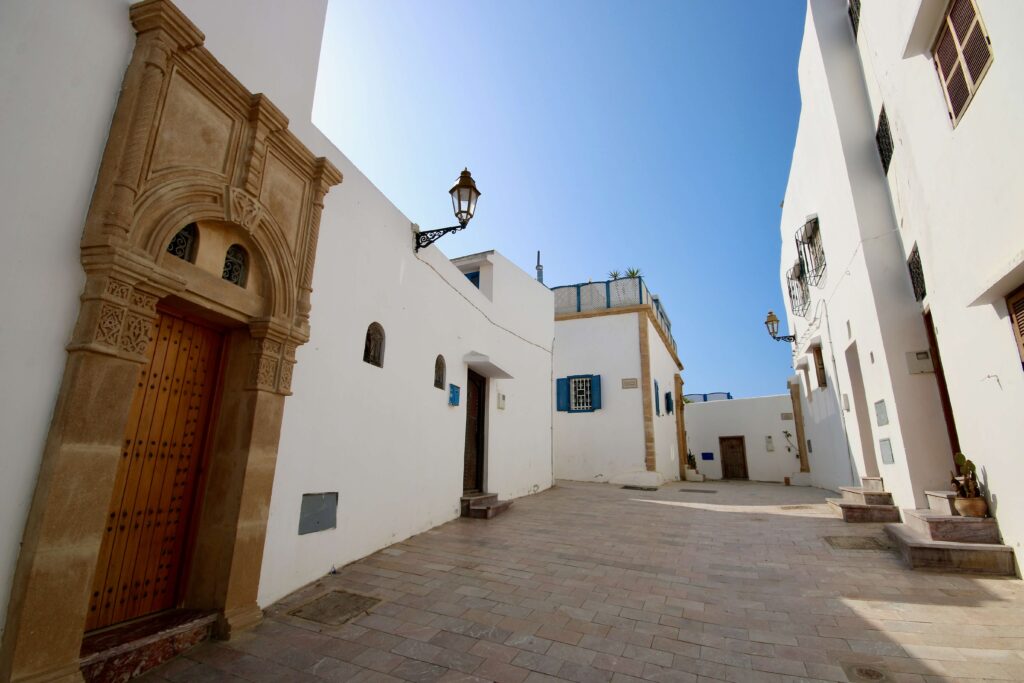
Rabat
In the 12th century, the Almohad caliph Yaqub al-Mansur envisioned Rabat as the capital of his empire. During his rule, he initiated an ambitious construction project to transform the city into a fortified seat of power. However, his untimely death shortly after the project began led to its abandonment.
It wasn’t until centuries later that the Alaouite sultan Muhammad ibn Abdallah would again designate Rabat as an imperial city. He was responsible for constructing the impressive Dar al-Makhzan palace as a secondary seat of power.
Rabat was established as an administrative centre under French colonial rule and was designated Morocco’s capital following independence in 1955. Located where the Bou Regreg meets the Atlantic Ocean, it’s a wonderfully relaxed city to explore and one of my favourite urban destinations in Morocco.
Top tip:
I love wandering between the elegant buildings of the Ville Nouveau. This is also where the Rabat Ville railway station is. Head here if you need to purchase train tickets for onward travel.
On the outskirts of the city, you’ll find the ancient remains of the Chellah necropolis, a royal burial complex enclosed by towering walls. Rabat also boasts some of Morocco’s best museums, including the Museum of History and Civilizations.
You can marvel at the grand facade of the Royal Palace, shop for antiques and jewellery along the Rue des Consuls or browse cutting-edge creations at the Mohammed VI Museum of Modern and Contemporary Art.
Ultimately, Rabat is a city where old meets new, with its atmospheric medina giving way to leafy boulevards lined with modern boutiques.
When it comes to accommodation, there’s an excellent choice of gorgeous riads that exemplify Moroccan design. Additionally, there are plenty of cosmopolitan hotels and restaurants serving the city’s business professionals and expat community.
To learn more about visiting the Moroccan capital, check out my Essential Travel Guide to Rabat.
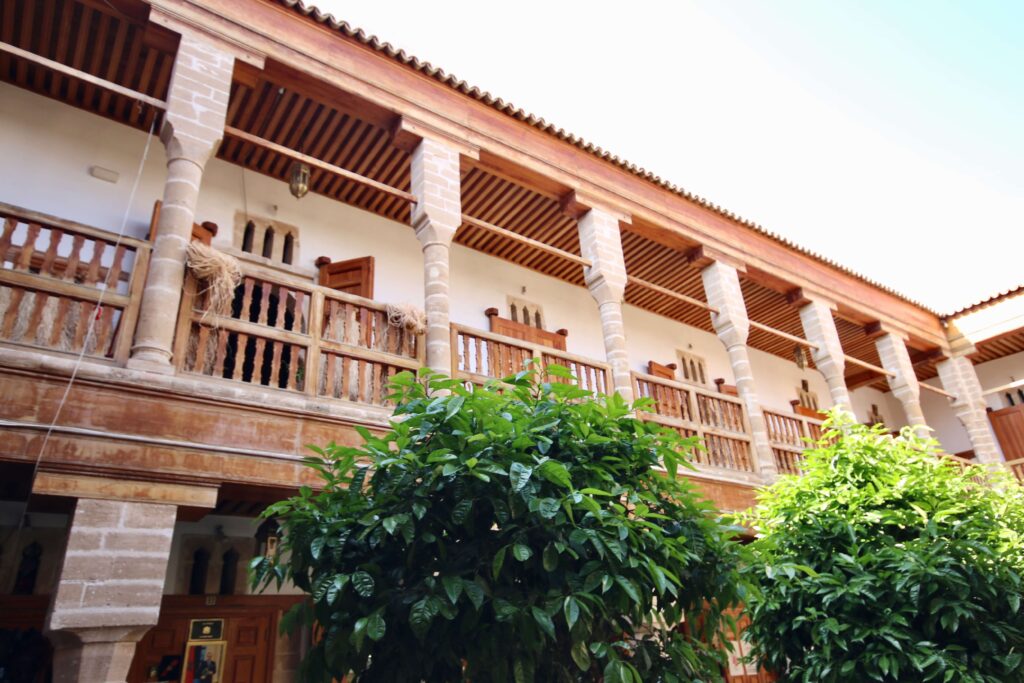
How to visit Morocco’s Imperial Cities
All of Morocco’s Imperial Cities – Fes, Marrakech, Meknes and Rabat – are connected by rail. This makes it easy to access them independently. Buses also travel between each of these destinations but tend to be slower than trains.
Currently, the high-speed train, Al Boraq, is available only as far as Casablanca. But there are plans for its extension to Marrakech and eventually to the beachside resort of Agadir.
Casablanca Mohammed V International Airport and Fes Sais International Airport are both major aviation hubs in the north, with flights to destinations across Europe. Marrakech Menara Airport is the biggest international airport in Morocco’s south. It receives flights from both large commercial airlines and low-cost carriers.
Top tip:
As Fes, Meknes and Rabat are all located in the north of Morocco, it makes sense to visit them together, either before or after exploring Marrakech.
My suggestion would be to fly into Marrakech, then travel by train north to Rabat before riding the rails inland to Meknes and Fes. Alternatively, you could do it in the opposite direction. Fly into Fes before travelling by train to Meknes and Rabat, then head down to Marrakech in the south.
If you want to explore Morocco’s Imperial Cities independently, check out my suggested one-week itinerary from Fes to Marrakech.
If you don’t feel confident exploring the country independently, there are numerous tours of Morocco’s Imperial Cities.
Having a local guide/driver at the helm will not only ensure you get the most out of the time you have available. They will offer unique insights into each destination that will elevate the experience.
Viator and GetYourGuide are great starting points if you’re searching for tours of Morocco’s Imperial Cities. Through both platforms, you can read reviews from previous guests to decide if a tour is right for you.
This private 6-day tour of the Imperial Cities is highly recommended, as is this week-long adventure from Casablanca. Most of the tours can be customised to your interests and travel plans, with alternative departure/arrival points available.
FAQs about visiting Morocco’s Imperial Cities
What are the four imperial cities of Morocco?
The four imperial cities of Morocco are Fes, Marrakech, Meknes and Rabat. Each of these cities has served as the capital of Morocco at various points throughout the country’s history.
Centred around a UNESCO-listed medina, Fes is the oldest of the imperial cities (it was established in the 8th century). It houses the world’s oldest continuously operating university, Al Quaraouiyine.
Marrakech, founded in 1062, is well-known for its lively souks and Islamic architecture. It includes the Koutoubia Mosque and Ben Youssef Madrasa.
Meknes became an imperial city in the 17th century during the reign of Sultan Moulay Ismail. It is notable for its magnificent gates and the grand Mausoleum of Moulay Ismail.
Rabat, the present capital of Morocco, is a more contemporary city but still features an ancient medina and the charming Kasbah of the Oudaias.
What is the oldest city in Morocco?
The oldest city in Morocco is the ancient settlement of Fes. It was founded in the late 8th century AD by Idris I, a descendant of the Prophet Muhammad.
Fes began as two separate settlements along the banks of the Fes River. Madinat Fas on the eastern shore was founded by Idris I in 789 AD, while Al-‘Aliya, on the western shore, was founded by his son Idris II in 808 AD.
The two settlements eventually grew and merged into one city, becoming the capital of the Idrisid dynasty. Over the centuries, Fes developed into a major centre of religion, culture and education. In fact, it is home to the oldest university in the world, Al Quaraouiyine.
The city’s medina, Fes el Bali, is a UNESCO World Heritage site renowned for its well-preserved medieval architecture and colourful souks.
Where does the king live in Morocco?
The King of Morocco resides in the Royal Palace in Rabat, the current capital of Morocco. Also known as Dar al-Makhzen, the Royal Palace is a sprawling complex of buildings and gardens. It serves as the official residence of the Moroccan monarch and the seat of the Moroccan government.
Situated at the heart of Rabat’s government district, its architecture blendstraditional Moroccan and Islamic styles, with beautiful tilework and carved cedar wood throughout. Parts of the palace are used for official government functions and ceremonies. Other areas are the private living quarters of the king and the royal family.
What are the past capitals of Morocco?
Throughout its long history, Morocco has had several capitals that have served as the seat of power for various dynasties and rulers.
The city of Fes, founded in the 8th century by Idris I, was the first capital and is still regarded as the country’s cultural and spiritual centre. It reached its height as a political and cultural capital under the Marinid dynasty in the 13th to 15th centuries.
Marrakech, another one of Morocco’s four imperial cities, served as a capital under the Almoravids in the 11th century. It was the capital again under the Almohads in the 12th century. The city of Meknes had its turn as the imperial capital during the rule of the Alawites from 1672-1727. It reached its apex under the reign of Moulay Ismail.
Finally, Rabat was established as the capital of Morocco in 1955, following the nation’s independence from France. Before this, during the French Protectorate (1912-1956), Rabat served as the administrative capital, even though it wasn’t the official capital of Morocco at that time.
Is it easy to visit Morocco’s imperial cities?
Visiting Morocco’s imperial cities is relatively straightforward thanks to the country’s reliable rail network. The four imperial cities – Fes, Marrakech, Meknes and Rabat – are well-connected not only by train but also by buses.
In less than an hour, you can travel from Fes to Meknes or be in the capital Rabat. Even the two imperial cities farthest away (Marrakech and Fes) are only 6.5 hours by train.
Additionally, all of Morocco’s imperial cities boast a wide selection of hotels and riads where you can comfortably spend the night.
For those who don’t want to travel independently or handle the logistics themselves, there are several highly-rated guided tours available. These take in all four destinations with a knowledgeable guide at the helm.

PLAN YOUR TRIP WITH MY FAVOURITE RESOURCES:
Find hotels via Booking
Book tours and attractions via Viator or GetYourGuide
Find a rental car via Discover Cars
Book flights via Kiwi or Booking
Search for buses and trains via 12Go or Omio
Get travel insurance via SafetyWing
Buy a digital eSIM with Airalo
By purchasing through my links, you’ll be supporting my website at no additional cost to you
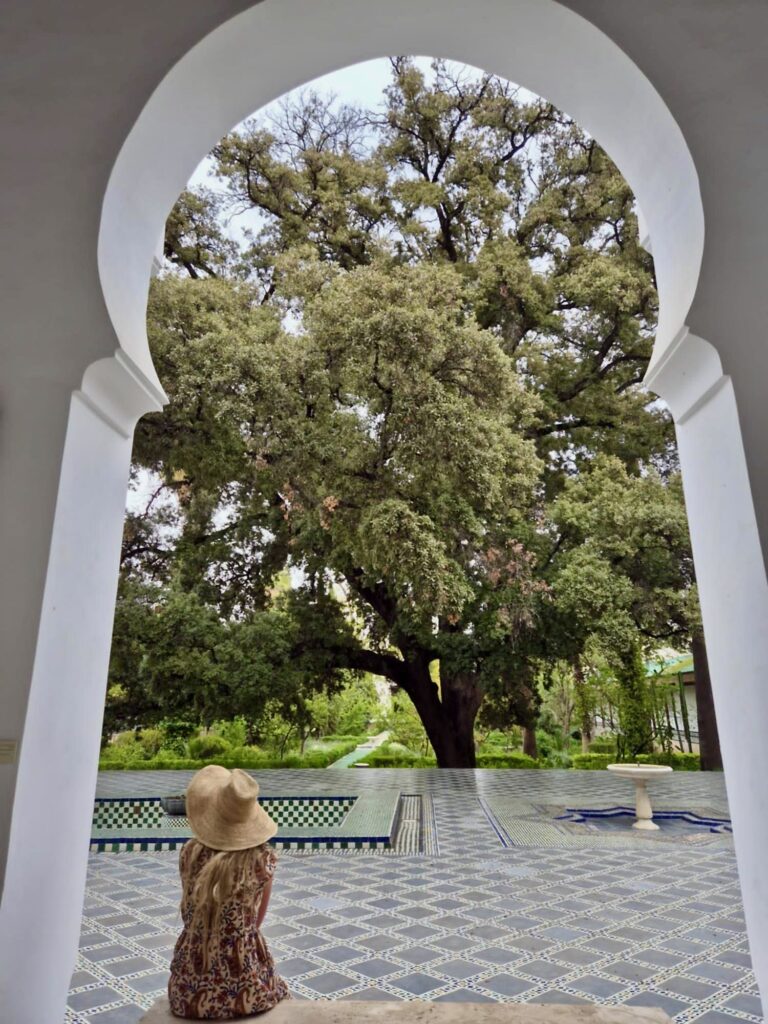
About Me
I’m Malika, a global traveller who first visited Morocco in 2014 before marrying a local and settling down in a little village on the Atlantic coast. Over the years, I’ve developed an intense love for Morocco, its incredible landscapes, storied cities and the exceptionally generous hospitality of its people.
Malika in Morocco is a place to share my years of experience exploring the country, from north to south and from the Atlantic Ocean to the Sahara Desert. As a resource for travellers visiting Morocco, I want to encourage others to experience this captivating destination the way they desire, whether that’s independently or under the expert guidance of local tour operators.
I believe strongly in supporting responsible and sustainable tourism initiatives while inspiring travel experiences that are life-impacting and mutually beneficial for both travellers and locals.
-
9 Best Family Hotels in Marrakech for a Kid-Friendly Stay
Looking for the best family hotels in Marrakech? Explore this curated collection of riads, resorts and apartments that cater to travellers visiting Morocco with kids. There’s no denying it – Marrakech is an incredible destination and one of Morocco’s most popular places to visit. But it can also be an assault on the senses and…
-
8 Best Luxury Hotels in Fes: Morocco’s “Cultural Capital”
Looking for the best luxury hotels in Fes? Explore this curated collection of high-end stays, including beautifully restored riads and modern retreats. Hidden gems and historic treasures await in Fes, Morocco’s cultural capital. Stays here are all about wandering through the maze-like medieval medina, uncovering artisanal wares in the souks and marvelling at the centuries-old…
-
Stunning 5-Star Marrakech Hotels for a Luxe Stay in the “Red City”
Looking for the best 5-star Marrakech hotels? Discover 10 incredible places to indulge in a high-end stay in Morocco’s “Red City”. There’s no denying it – Marrakech is an irresistible getaway. It’s located a short flight from many European destinations but with the feeling of being a world away. In my opinion, this historic North…
-
4 Unforgettable Tours to the Sahara Desert from Fes
Looking for the best tours to the Sahara Desert from Fes? Explore this curated collection of multi-day trips, including budget-friendly small group adventures and private desert tours in Morocco. If there’s one experience that’s high on many travellers’ lists when visiting Morocco, it’s spending a night in the Sahara Desert. Having been lucky enough to…
-
5 Unforgettable Tours to the Sahara Desert from Marrakech
Looking for the best tours to the Sahara from Marrakech? Explore this curated collection of multi-day Moroccan desert trips, including budget-friendly small group adventures and private desert tours in Morocco. Spending a night under the star-studded sky of the Saharan desert is an amazing experience. It’s something that I’ve been lucky enough to do. The…
-
7 Best Places to Stay in Ait Benhaddou: Morocco’s Ancient Ksar
Looking for the best places to stay in Ait Benhaddou? Explore this curated collection of auberges, guesthouses and hotels, all within easy reach of the UNESCO World Heritage-listed ksar. Set against the dramatic backdrop of the High Atlas Mountains lies the fortified ksar of Ait Benhaddou – an ancient walled city that is now designated as…
